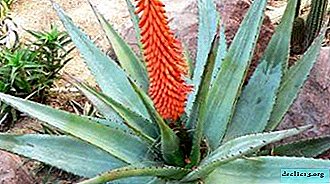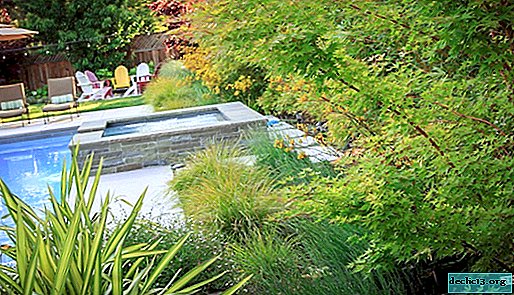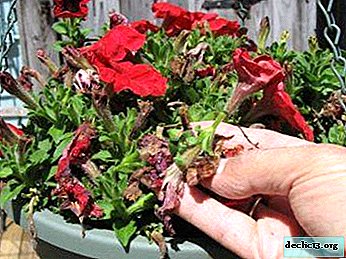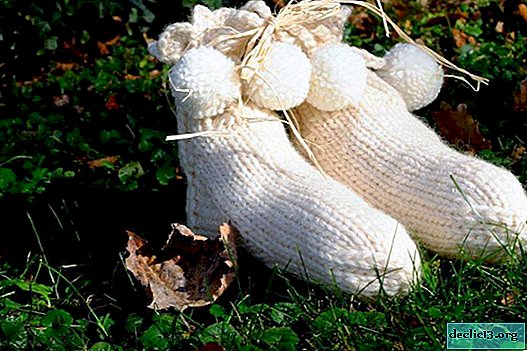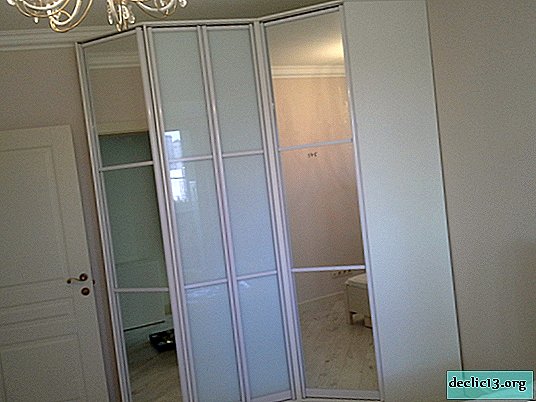Royal conditions for a room rose: how to transplant a plant and provide it with decent care?

Rose has long been the queen of flowers. Her magical and enchanting beauty touches the hearts of many gardeners. There are no people who would be indifferent to her. The rose is so diverse that for each house you can choose exactly the type and variety that is suitable only for him.
Many people consider a rose too picky, they are afraid to take up its cultivation. Of course, during the growth of the flower you can encounter certain difficulties. But even with them, if everything is done correctly, it is quite easy to cope. Most problems arise during the transplant process. This process must be treated with special care. In the article we will tell you how to transplant a flower after purchase and properly care for a room rose at home.
Why is this needed?
In order for the rose to please with elegant flowering, it is necessary to provide it with proper care. Transplantation is one of the conditions that must be met very carefully. The first transplant is necessary after the rose is brought home from the store. After all, store pots and soil are absolutely not suitable for her as a permanent residence. The following transplants will be required in subsequent years.
When is it better to do it?
Many gardeners advise replanting a room rose after flowering. After the purchase, you should wait a bit so that the flower gets used to the new conditions. This will allow the room rose to avoid stress.Indoor rose can be transplanted at any time of the year. This is possible because the apartments do not have a significant temperature difference depending on the time of year. Of course, it is advisable to deal with transplant in the spring. It is worth considering that care after transplantation in the summer is rather difficult to provide, because the first time the rose should be in a room with a low temperature.
The plant may need an emergency transplant. The reasons for an urgent transplant include:
- Sprouting of roots;
- Flower disease.
Step-by-step instructions for transplanting a houseplant
For transplanting, it is necessary to prepare a pot, soil mixture, drainage.
Vessel
 A new pot should be chosen more than the one in which the rose is grown. Its overall dimensions should be 3-5 cm larger than the previous one in diameter of the bottom and 5-7 cm in height. It is better to choose a ceramic product with glazing. If there is no such dishes, then you can take a plastic container with thick walls and a large tray.
A new pot should be chosen more than the one in which the rose is grown. Its overall dimensions should be 3-5 cm larger than the previous one in diameter of the bottom and 5-7 cm in height. It is better to choose a ceramic product with glazing. If there is no such dishes, then you can take a plastic container with thick walls and a large tray.
It is best to give preference to a classic pot or slightly rounded shape. These features are very important when transplanting. If you select a very large pot, the water will stagnate, which will lead to acidification of the soil. As a result, you can not see the bloom at all.
Priming
Land can be purchased at the flower shop. For roses, there is a special primer ideal for them. Together with the soil, drainage mixtures are also purchased. Soil can be prepared at home.
From one capacity to another - an algorithm of actions
Adult plant
- Prepare a pot for transplant. To do this, soak the product in warm water for 2-3 hours. If a pot is used in which another plant was grown, it should be thoroughly washed. No need to use detergents. Suitable for cleaning ordinary baking soda. Plastic pots do not need to be washed.
- Place drainage at the bottom of the pot. In pots without holes, the drainage layer should be at least 3 cm. In pots with holes, at least 1 cm. You can use the finished drainage mixture or use improvised materials. Expanded clay, pebbles, polystyrene and clay cuttings are suitable.
- Prepare Land for Transplant. Soil for roses is sold in any flower shop. The soil mixture can be prepared independently. There are several options for mixtures.
You can mix:
- 2 parts of clay-sod land;
- 1 part of sand;
- 2 parts of peat or rotted manure.
Or:
- 1 part peat;
- 4 parts of sod-humus land;
- 4 parts of sand.
In both formulations, you can add granules of any complex fertilizer for roses. Also, many add small expanded clay to the soil.
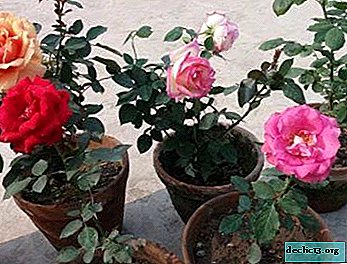 Before planting, rose shoots must be cut so that only 2-3 buds remain on each.
Before planting, rose shoots must be cut so that only 2-3 buds remain on each.- The transplant itself comes down to transshipment of an earthen coma. It must be handled with extreme care, because the roots of the rose are very thin and fragile. Therefore, new soil is laid at the bottom of the pot after the drainage.
Experienced gardeners recommend getting the plant out of the old pot in this way:
- Turn the container over, passing the stems of a room rose between your fingers, and shake it violently. So the flower is less worried.
- Before removing the pot with the plant, it is better to place it in water for several hours so that the ground is well saturated.
- An earthen lump is carefully placed on the drainage layer. Then you should add more earth so that there are no voids along the edges.
- After all the manipulations, you need to slightly shake the pot to compact the soil mixture. If after this the soil settles, then you need to add more land.
- The first watering should be carried out 24 hours after transplantation. It is necessary to water only with settled water at room temperature. Immediately after transplanting, the rose can be sprayed from the spray gun. Every day, in the morning and in the evening it is necessary to repeat spraying.
- The transplanted plant should be placed in a cool and shady place.
- The next day you can put the rose in a bright place, protecting it from direct sunlight.
We offer you to watch a visual video with the process of transplanting a room rose:
After the purchase
A house rose transplant immediately after purchase differs from an adult plant transplant at home only in preparation for the procedure. Let's figure out how to transplant a purchased flower and what is important to remember. Such the plant can be replanted without waiting for the end of the flowering period.
- Before transplanting, the rose should be washed with soapy water. This will help in the fight against parasites.
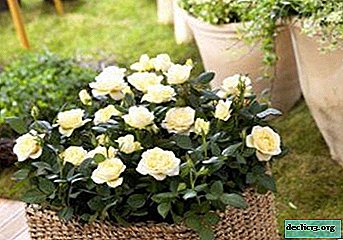 After this, the plant must be left in a basin with cool water for 30 minutes. Then it is recommended to arrange a contrast shower for the leaves, alternating cold and hot water. The temperature of hot water should not exceed 40 degrees.
After this, the plant must be left in a basin with cool water for 30 minutes. Then it is recommended to arrange a contrast shower for the leaves, alternating cold and hot water. The temperature of hot water should not exceed 40 degrees.- Spray a room rose with a solution of epin from a spray bottle. Cover with a plastic bag so that it does not touch the leaves.
- Once a day you need to arrange airing, increasing its time.
- After all the manipulations, the flowers will fall off, and the plant can be transplanted.
You can find more information on room rose care after your purchase in this article.
First-time care after transplantation
- Temperature. The optimum temperature in the summer is 20 - 25 degrees, in the winter - 10 - 15 degrees.
- Air humidity. In a dry room, a room rose needs to be sprayed with warm water 2 times a day. In a cool room you do not need to spray.
- Lighting. Indoor rose is a photophilous plant, therefore it is necessary to grow it on the windowsill of the east and south-east windows. In spring, the flower can be illuminated.
- Top dressing. During the period of active growth, it is necessary to feed a room rose once a week. Fertilizers should be applied alternating between organic and mineral.
- Watering. Watering a room rose should be as the earth dries. The plant is very poor in overflow because it can lead to acidification of the soil. Poured flower under the root.
We offer you to get acquainted with an informative video about caring for a room rose after a transplant:
We talked about all the nuances of caring for a room rose here, and from this article you will learn how to create conditions suitable for the plant in the winter.
Growing a room rose is a very difficult task. But this does not prevent many gardeners from observing all the conditions to provide it with everything necessary. After all, everyone wants a charming rose with elegant flowers and an unusually pleasant aroma in his house.

 Before planting, rose shoots must be cut so that only 2-3 buds remain on each.
Before planting, rose shoots must be cut so that only 2-3 buds remain on each. After this, the plant must be left in a basin with cool water for 30 minutes. Then it is recommended to arrange a contrast shower for the leaves, alternating cold and hot water. The temperature of hot water should not exceed 40 degrees.
After this, the plant must be left in a basin with cool water for 30 minutes. Then it is recommended to arrange a contrast shower for the leaves, alternating cold and hot water. The temperature of hot water should not exceed 40 degrees.